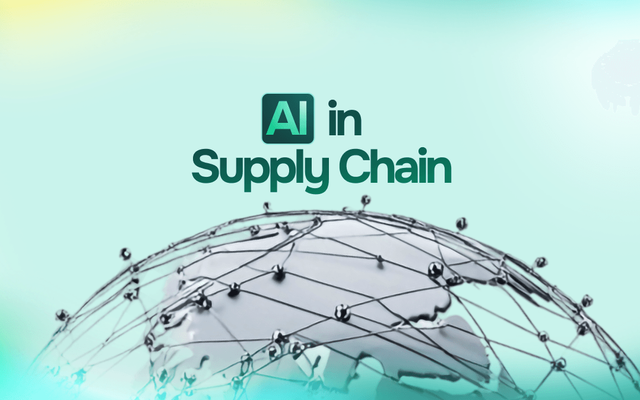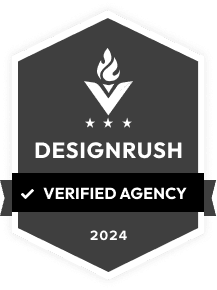
The business world is under serious pressure to clean up its act. Consumers want to know where their stuff comes from and whether it's hurting the planet. Regulators keep tightening environmental rules. Investors are putting their money where companies actually care about sustainability.
Supply chains are responsible for a huge chunk of carbon emissions and waste. According to BCG research, eight global supply chains account for more than 50% of annual greenhouse gas emissions worldwide.
But there's good news. Artificial intelligence is turning these massive, complicated networks into something way more efficient and sustainable. By automating the important stuff, AI helps businesses cut waste, reduce emissions, and make better choices about resources.
The question of how AI can make supply chains more sustainable isn't just talk anymore. Companies across all kinds of industries are actually doing it. And they're finding that being green can also give them a competitive edge.
Sustainability Challenges in Traditional Supply Chains
Let's be real: traditional supply chains are kind of a mess when it comes to the environment.
The carbon footprint from moving stuff around, storing it, and making it is pretty massive. Think about all those trucks driving extra miles because nobody planned a better route. Or warehouses burning electricity 24/7 to keep the lights on for products just sitting there collecting dust.
Waste pops up everywhere in old-school supply chains:
Overproduction means making too much stuff that nobody wants, and it ends up in landfills
Excess inventory just sits around taking up space while products go bad or become outdated
Poor coordination means everyone's out of sync (suppliers, manufacturers, and retailers are all doing their own thing)
Guesswork forecasting leads to making tons of products people don't want and running out of what they actually need
And good luck trying to figure out where everything comes from. Most supply chains are so murky you can't tell if your materials are sourced responsibly or if your shipping partners are taking the most wasteful routes possible. When you can't see what's happening, you can't fix it.
Why Traditional Methods Fall Short
Old ways of managing supply chains are all about reacting to problems after they happen. Demand spikes? Scramble to make more and pay through the nose for rush shipping. Supplier delay? Panic and find the fastest (and most polluting) way to fix it.
Modern supply chains are crazy complex. You've got weather, traffic, politics, and what people want changing constantly. Spreadsheets and weekly reports just can't keep up. By the time someone looks at the data and decides what to do, everything's already different.
Most companies are swimming in data but barely using any of it. All those sensors and tracking systems and sales records? They're generating mountains of information, but without smart tools to make sense of it, all those insights just sit there unused.
Key AI Technologies Driving Sustainability in Supply Chains
A bunch of different technologies work together to show how can AI enhance sustainability in supply chain operations.
Artificial Intelligence in Supply Chain Sustainability
When we talk about AI in supply chain sustainability, we mean systems that learn from data, spot patterns, and make smart choices without someone having to tell them what to do every step of the way. Machine learning is the backbone. These programs look at what happened before, figure out the patterns, and predict what's coming next. The cool part? They get better at it the more data they see.
Predictive analytics takes it up a notch by actually forecasting specific stuff. These tools help companies see problems coming before they hit and figure out the best way to use resources.
AI-powered automation is where things really happen. Once the system learns the best way to do something, it just does it automatically, adjusting on the fly when things change.
Technologies That Enable AI Automation
Different AI tools handle different jobs in making supply chains greener and smoother.
Machine Learning for Demand Prediction
Machine learning is really good at looking at tons of data and figuring out what people will want to buy. These systems juggle hundreds of things at once: what time of year it is, how the economy's doing, what the weather looks like, what's trending on social media, what people bought before.
When you can predict demand accurately, you stop wasting stuff. Manufacturers make the right amount. Stores stock what they'll actually sell. Nobody's moving excess inventory all over the place for no reason.
Robotic Process Automation (RPA)
RPA takes care of the boring, repetitive tasks that humans used to do manually. In supply chains, that means:
Processing orders without someone having to click through forms
Keeping inventory counts updated in real-time
Creating shipping paperwork without typos
Following packages across different delivery companies
When you automate this stuff, you cut out the mistakes that create waste. No more ordering too much because someone entered the wrong number or shipping the wrong thing to the wrong place.
Internet of Things (IoT) Integration
IoT is basically a bunch of connected sensors watching everything in your supply chain. Temperature sensors make sure food and medicine stay cold. GPS tells you exactly where shipments are. Energy monitors show you how much power your facilities are using.
When you connect these sensors to AI, magic happens. The AI watches all this data in real-time and can spot problems instantly. If a refrigerated truck starts getting too warm, the system sounds the alarm before all that food spoils.
Natural Language Processing (NLP)
NLP lets computers understand regular human language. In supply chains, it powers chatbots that answer questions about orders, delivery times, and product availability without a person having to step in.
This makes everything more transparent because information is available right away. Customers can check on their orders anytime. Suppliers get updates about changes immediately.
How AI Can Make Supply Chains More Sustainable by Automating Key Processes
Let's look at real ways that show how AI can make supply chains more sustainable through smart automation.
AI-Driven Demand Forecasting
Old-school forecasting is basically looking at what sold before and making an educated guess. That works okay for stuff that sells pretty steadily, but it falls apart when things get unpredictable or you're launching something new.
AI changes the game by looking at everything: not just sales numbers, but what people are saying on social media, economic trends, what competitors are doing, weather patterns, you name it.
The green benefits ripple through the whole chain:
Manufacturers make what people actually want instead of stockpiling extras
Distributors put the right amount of stock in the right places
Retailers don't have to mark everything down or throw out expired stuff
Factories can run when it makes the most sense, maybe when renewable energy is available or electricity is cheaper
Better forecasting also means production schedules can be flexible instead of running full blast all the time just to build up inventory nobody needs yet.
AI for Inventory Optimization
Keeping inventory costs real money and wastes resources. All those products sitting in warehouses need heated or cooled space and lights running. Some of it goes bad or becomes outdated before you can sell it.
AI figures out the perfect balance between having enough stock and not having too much. These systems constantly recalculate how much of each product should be at each location, considering how demand changes, how long it takes to get more, and what level of service customers expect. When things change, AI updates the plan automatically.
Smart inventory management cuts waste in a bunch of ways. Less total inventory means less stuff expires or becomes obsolete. Better distribution means you're not constantly rushing products from one place to another.
AI in Route Planning and Logistics
Moving stuff around creates a ton of emissions. According to the EPA, transportation is actually the biggest source of greenhouse gas emissions in the United States. So making transportation more efficient is huge for sustainability.
AI-powered route planning looks at way more than just the shortest distance. It considers:
Where traffic is bad and when
Weather and road conditions
Gas prices and how much the vehicle can carry
When deliveries need to arrive
Driver schedules and legally required breaks
The environmental payoff is real. Better routes mean fewer miles, which means less fuel and fewer emissions. Better packing means trucks go out full instead of half-empty, so you need fewer trips total.
AI also picks the greenest way to ship things. Sure, flying stuff is fast, but it creates way more pollution than putting it on a boat. AI balances deadlines against environmental impact and picks the slower, greener option when there's time.
Supply Chain Visibility and Traceability
You can't fix what you can't see. When companies can actually trace products from raw materials all the way to delivery, they can make sure sustainable practices are really happening and spot where things could be better.
AI platforms pull together data from everywhere (IoT sensors, blockchain records, supplier systems, shipping trackers) and turn it into one clear view that shows where products are and how they're being handled.
This visibility helps companies make sure everyone in their supply chain is following environmental standards. AI can flag suppliers that aren't meeting green requirements, spot delivery companies with terrible efficiency, or find facilities that are using way too much energy.
Customers care about this stuff too. More people want to know their purchases line up with their values. AI tracking lets companies prove where things come from, how they're made, and what kind of environmental impact they have.
AI for Waste Reduction in Manufacturing
Manufacturing creates a lot of waste through defects, inefficiency, and just using too many resources. AI helps manufacturers cut waste by optimizing how things run and catching problems early.
Computer vision systems can inspect products way better than human inspectors. They spot defects right away, so problems get fixed immediately instead of ruining whole batches.
Optimization algorithms are constantly tweaking manufacturing settings to maximize efficiency. They watch energy use, material consumption, and quality, making tiny adjustments that cut waste while keeping production moving.
Predictive maintenance is another big win. AI analyzes data from equipment to predict when something's about to break. Fixing it before it fails prevents damaged products, production shutdowns, and wasted materials. Plus, well-maintained equipment runs more efficiently and uses less energy.
Moving Forward with AI for Sustainable Supply Chains
AI and supply chain sustainability together offer real potential for companies that actually want to be environmentally responsible. Automated forecasting stops waste from making too much. Smart inventory management means less stuff going obsolete. Intelligent routing cuts transportation emissions.
All of this shows how can AI enhance sustainability in supply chain operations across different industries. The technology isn't experimental anymore. It's practical stuff that actually works and delivers results you can measure.
Getting there takes some investment and willingness to change. Companies need to build up their data systems, train their people, and integrate AI with what they're already doing. But it's worth it, both for the bottom line and for environmental outcomes that matter.
Businesses wondering how AI can make supply chains more sustainable should start by finding their biggest waste problems and inefficiencies. Focus first on areas where automation will clearly help and build momentum from there. Transforming supply chains with AI isn't just about improving operations. It's about running businesses in a way that actually supports sustainability instead of working against it.







